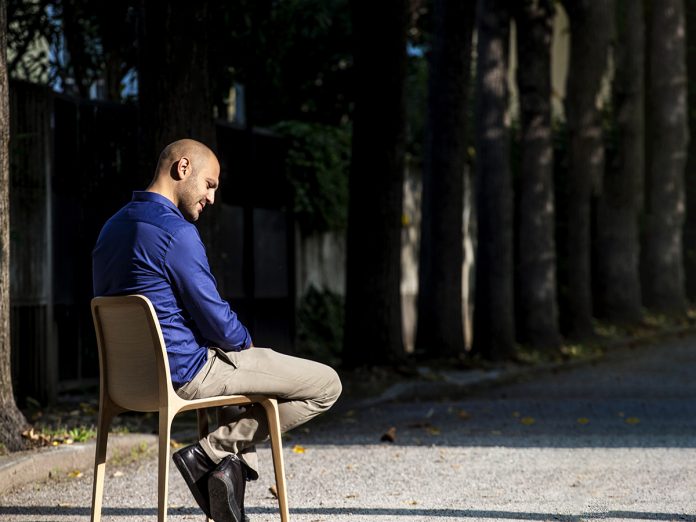The 2024 edition of the Maestri del Paesaggio landscape festival, which since 2011 has invited philosophers, writers, photographers, architects, landscape designers, researchers and botanists to share their visions on the integration of man and nature, opens tomorrow in Bergamo.
The heart of the event is Piazza Vecchia, which this year will host an installation designed by the Paris studio Mosbach Paysagistes. The space will also be furnished thanks to a collaboration with Pedrali, a company that is supporting the event for the tenth year and has chosen seats from the Philía collection, designed by Odo Fioravanti, and Elliot tables by Patrick Jouin.
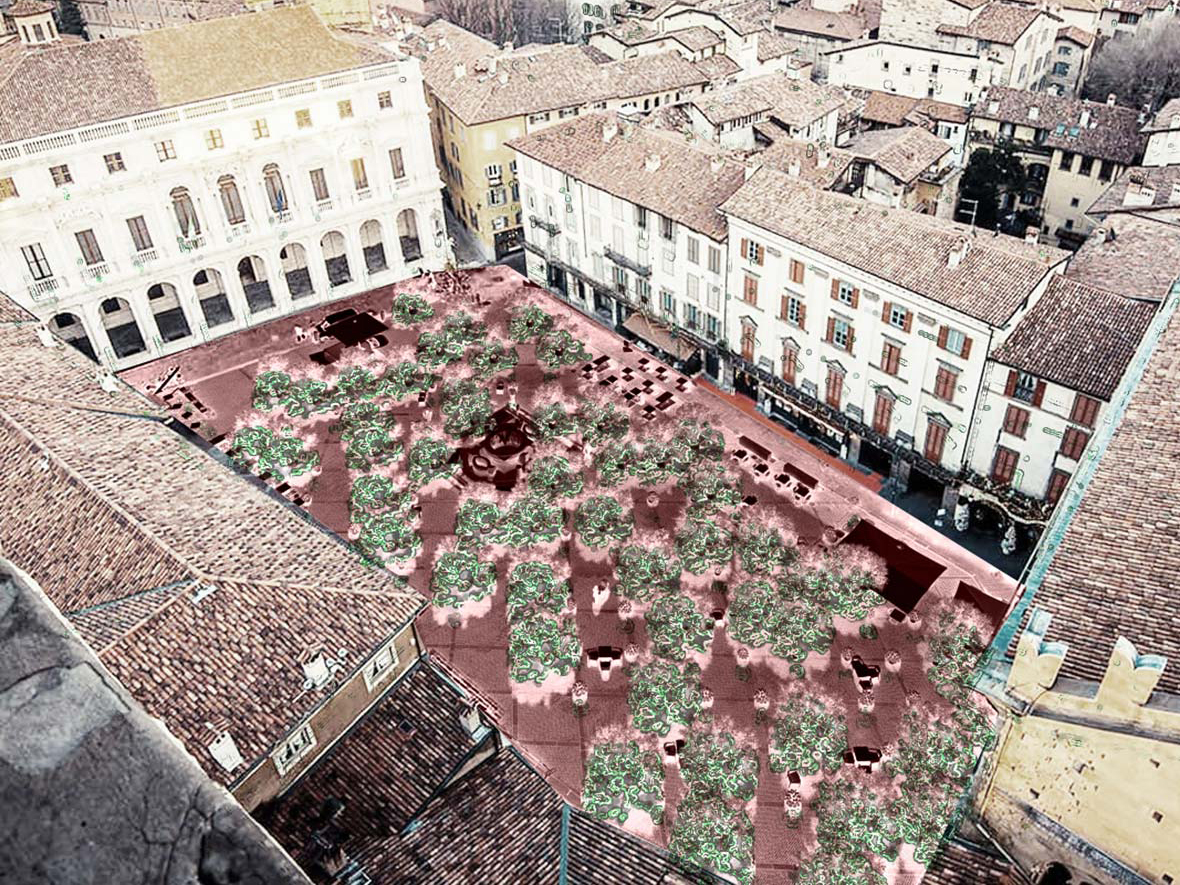
We met Fioravanti, who also designed the Frida chair for Pedrali, Compasso d’Oro winner in 2011, to talk about this latest project. But also about sustainability, design and dream projects.
What was the origin of Philía’s design? Looking at it, you have a very summery image, is that a correct perception?
Correct. Even the choice of the rope crossing in the middle comes from that vacation mood. I’m like lizards, I go out when it’s hot outside. All the images I had in my head during the pre-drawing stage were around this theme: suns, the beautiful places of our peninsula. An aperitivo, but not in the Milanese sense, more like in the south: something to quench one’s thirst after mass, and then home to eat lasagna. I don’t usually work from a feeling, but this time I wanted to make a product that would fit into that image.
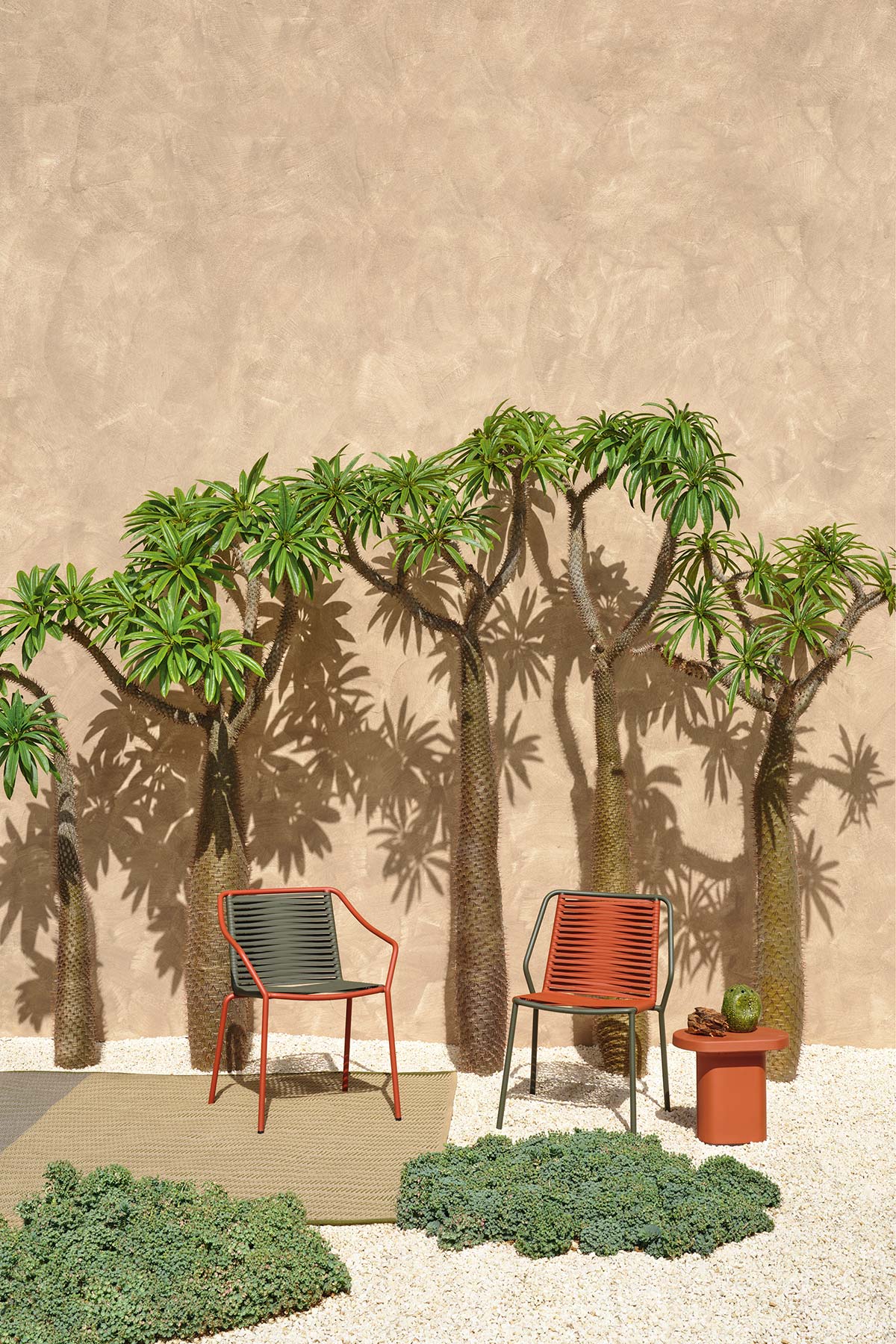
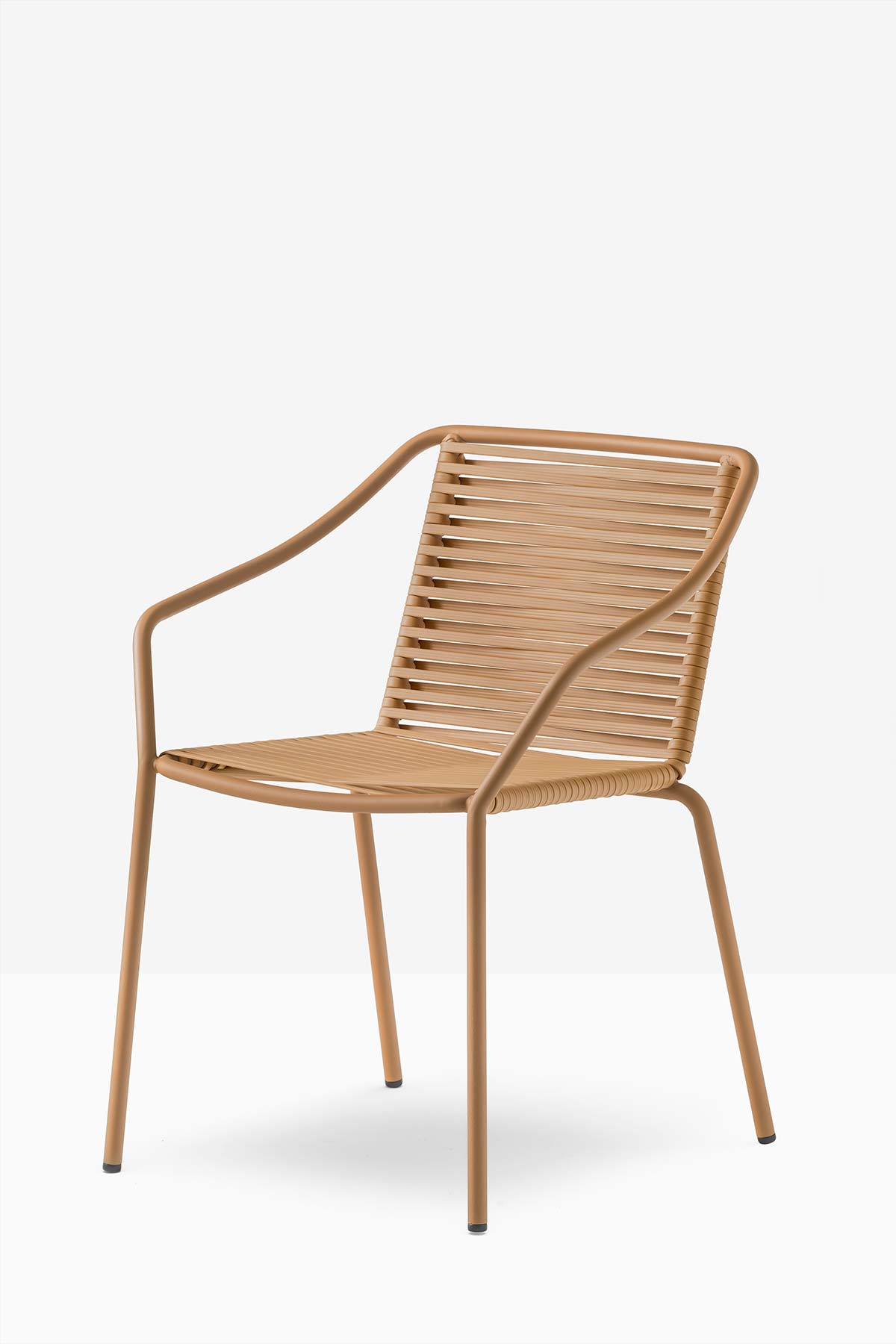
So you started with a state of mind.
Yes, and it was very present when we developed the project. In the end, Philía is like an infusion, a distillation of those feelings. I am happy because even from the point of view of the forms I was able to work really well. I had time, they managed to refine the forms. Not a single line is out of place.
What detail of this project do you like the most?
I would say the line of the armrest of the chair, because we managed to create a kind of curve that has something oriental about it. To see how you only have to change a curve minimally and immediately have a different perception is something that always excites me. I’m also very happy with the whole study behind this project: the chair version is a bit more vertical, because that’s what you tend to use at the table, to have a meal or a drink; while the armchair is related to a more relaxing moment, so it’s a bit more inclined. These are details that I always imagine as caressing the end user in some way, these are attentions that through the object you are designing you are directing to those who will use it. It’s like sending a message.
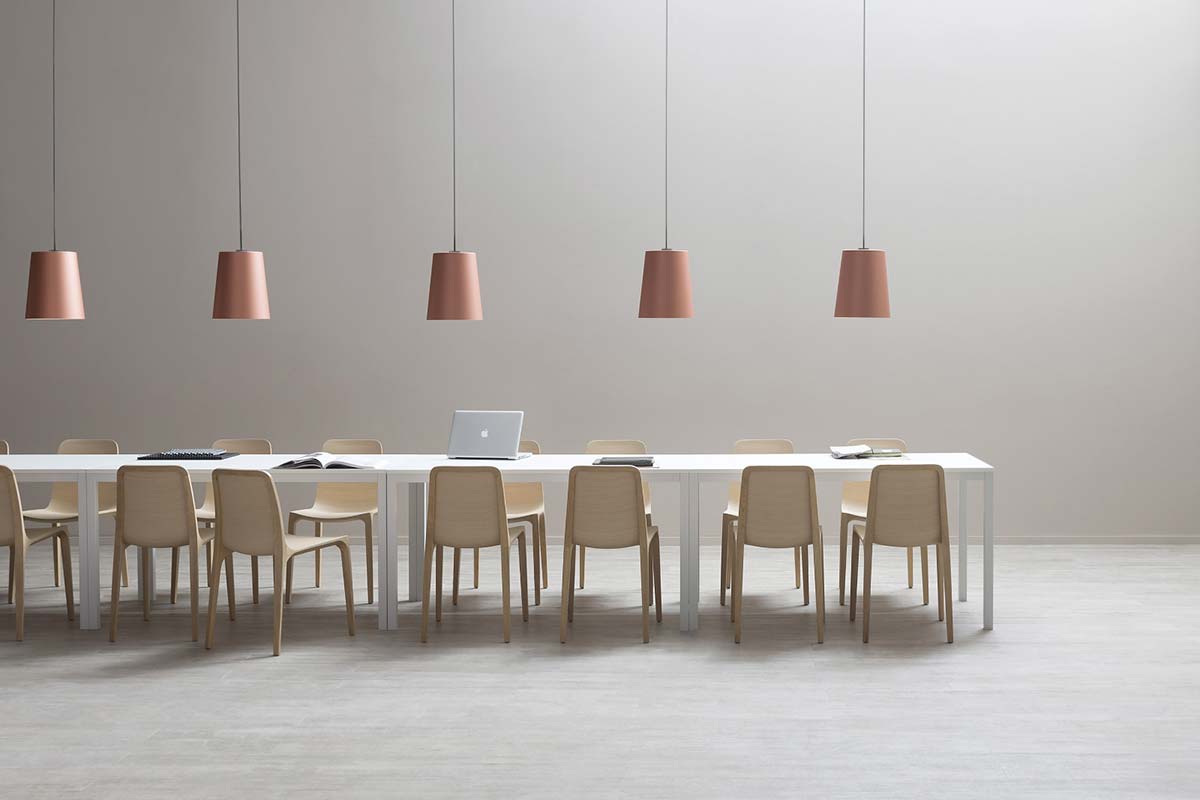
That’s what design is about, isn’t it? While we’re on the subject, what does good design mean to you today?
For me, design today has to go back to showing that the designer has taken a stand, has decided to communicate a sign, a meaning, a content. That’s what made Italian design great, because we made it a medium on a par with cinema, poetry or music. We tried to give meaning to objects. We must not lose that spirit.
It is now part of the design process to think about raw materials, how they are obtained, how they are disposed of, what happens at the end of the product, and so on. How do you view this aspect?
The truth is that there is nothing on the legislative level about these issues yet, it’s up to the companies to be honest. And companies – even those that manage to have cultural or anthropological spin-offs – are all born to make profits. So there are companies like Pedrali that are really committed (I see it with my own eyes) and others that are much less committed. In addition, the certifying bodies are all private and no journalist checks the facts; what is written in a press release is taken as reality. In fields other than design, this would not be acceptable, so I think we need to define rules to really start down this path. Sustainability is a never-ending road, and the sooner we start down that road, the sooner we’ll stop degrading the planet’s heritage.

What other projects are you involved in?
A very nice job I’m doing is a consultancy for LG Electronics: they show me all their new product lines and I give my thoughts in a discussion with the design campus of LG in Korea. It is a nice job that has been going on for two years. Then we design machines to put on top of buildings to counteract seismic- or wind shaking. It’s beautiful work because it’s super technical, but it also has its own aesthetic. I like working on subjects that designers don’t usually look at, and I get a lot of inspiration from the idea of dealing with earth tremors. It’s exciting. I also enjoy working with very young people because it’s a start-up.
Finally, as a designer, what is your dream project?
To design a bulldozer. I would love to do that, ever since I was a kid. As long as I can remember.


